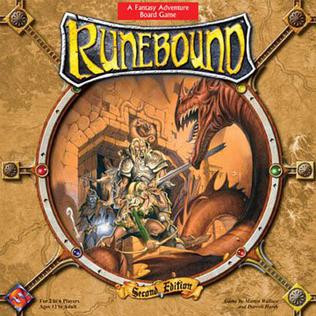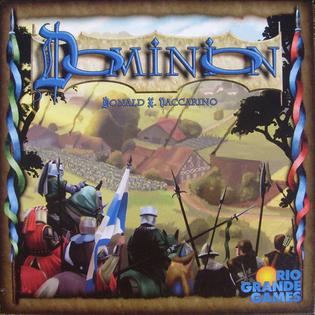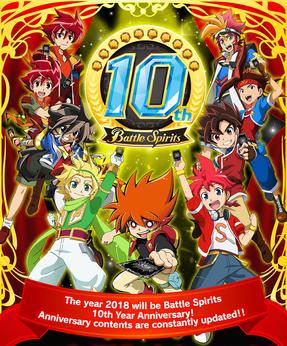
Cosmic Encounter is a science fiction–themed strategy board game designed by "Future Pastimes" and originally published by Eon Games in 1977. In it, each player takes the role of a particular alien species, each with a unique power to bend or break one of the rules of the game, trying to establish control over the universe. The game was inducted into the Academy of Adventure Gaming Arts & Design Adventure Gaming Hall of Fame in 1997.

A Game of Thrones: The Card Game is an out-of-print collectible card game produced by Fantasy Flight Games. It is based on A Song of Ice and Fire, a series of novels written by George R. R. Martin. The first set was Westeros Edition and was released in August 2002. It has since won two Origins Awards. The game's primary designer is Eric Lang, the lead developer is Nate French, with Damon Stone serving as associate designer.

The Yu-Gi-Oh! Trading Card Game is a collectible card game developed and published by Konami. It is based on the fictional game of Duel Monsters created by manga artist Kazuki Takahashi, which appears in portions of the manga franchise Yu-Gi-Oh! and is the central plot device throughout its various anime adaptations and spinoff series.

OverPower is an out-of-print collectible card game produced by Fleer Corporation originally featuring characters from Marvel Comics and later from DC Comics and Image Comics. The game was initially launched in August 1995. In the game, two players went head-to-head with teams of four heroes and villains. Unlike most other collectible card games of the mid-1990s, OverPower was very distinct strategically and structurally different from Magic: The Gathering.

The Harry Potter Trading Card Game is an out-of-print collectible card game based in the world of J. K. Rowling's Harry Potter novels. Created by Wizards of the Coast in August 2001, the game was designed to compete with the Yu-Gi-Oh!, Pokémon and Magic: The Gathering card games. Its release was timed to coincide with the theatrical premiere of the first film in the series. The game was praised for the way it immersed children in the Harry Potter universe. At one point the game was the second best selling toy in the United States; however, it is now out of print.

The World of Warcraft Trading Card Game is an out-of-print collectible card game based on Blizzard Entertainment's MMORPG, World of Warcraft. The game was announced by Upper Deck Entertainment on August 18, 2005 and released on October 25, 2006. Players can play against each other one-on-one, or can join others in order to defeat dungeon/raid "bosses" based on those in the MMORPG. In March 2010, Upper Deck lost the license from Blizzard Entertainment. The license was acquired by Cryptozoic Entertainment later in the month, with the company announcing that planned card sets would be released.

Ultimate Combat! is an out-of-print collectible card game designed around the concept of Asian martial arts combat. The game was designed by judo sensei Dave Long and released in 1995 by Ultimate Games. It is very similar to Magic: The Gathering and roughly 75% of the rules are the same. It was endorsed by the United States Judo Association team, the USA Taekwondo team and the USA Wrestling team.

The Conan Collectible Card Game is an out-of-print collectible card game set in the fictional Hyborian Age of Conan the Barbarian. The game was designed by Jason Robinette, and produced by Comic Images and released in 2006.
QuickStrike is an out-of-print collectible card game gaming system developed by Upper Deck for use in their games. This system made its initial debut in 2006.
Gundam War: Mobile Suit Gundam the Card Game also known simply as Gundam War is an out-of-print collectible card game based on the Gundam anime series produced by Bandai. Players can simulate battles in the anime series. The game is designed for 2 players, though there may be different fan-created multiplayer rules. This game is sometimes confused with the Gundam M.S. War Trading Card Game, since both are published by Bandai and are based on the Gundam series.

Runebound is a high fantasy adventure board game created by Martin Wallace and Darrel Hardy and published by Fantasy Flight Games in 2004. A second edition was published in 2005. A third edition was released in 2015. In Runebound, one to six players take the roles of adventurers who seek out quests. The quests are then resolved with either victory for the player, or a loss of some item. Each player is seeking quests and trying to gain experience which results in greater power and combat skill.

Dominion is a card game created by Donald X. Vaccarino and published by Rio Grande Games. Originally published in 2008, it was the first deck-building game, and inspired a genre of games building on its central mechanic. Each player begins with a small deck of cards, which they improve by purchasing cards from a common supply that varies from game to game. Cards can help the player's deck function, impede their opponents, or provide victory points. As of December 2022, fifteen expansions to the original Dominion have been released.
The Zendikar block is a Magic: The Gathering block consisting of the sets Zendikar, Worldwake, Rise of the Eldrazi. The eponymous setting is a vast, untamed wilderness, whose few bastions of civilization exist primarily for outfitting treasure-seeking expeditions to distant locales. Colossal ancient octahedral stones called "hedrons" float in the sky. A phenomenon known as "the Roil" causes frequent geological upheaval as it sweeps across the land. Unlike the previous two blocks, there is no multicolored theme. Instead, the themes Zendikar and Worldwake revolve around lands, and a theme of an adventure or quest. Rise of the Eldrazi, while part of the Zendikar block creatively and for the sake of constructed tournament rules, is unique mechanically and is designed to be drafted on its own. Drafts in the Zendikar block are either ZEN-ZEN-WWK or ROE-ROE-ROE.
The rules of Magic: The Gathering were originally developed by the game's creator, Richard Garfield, and accompanied the first version of the game in 1993. The rules of Magic have been changed frequently over the years by the manufacturer, Wizards of the Coast, mostly in minor ways. However, major rules overhauls have also been done a few times.

Battle Spirits is a two-player collectible card game (CCG) jointly developed by Bandai and Sunrise, Inc. and a franchise which also includes several anime series, manga serialisations, and other merchandise like toys and video games.

Star Realms is a card-based deck-building science-fiction tabletop game, designed by Rob Dougherty and Darwin Kastle and published in 2014 by Wise Wizard Games. The game started out as a Kickstarter campaign in 2013. The goal of Star Realms is to destroy opponents by purchasing cards using "trade" points and using these cards to attack an opponent's "authority" using "combat" points. The game takes place in a distant future where different races compete to gain resources, trade and outmaneuver each other in a race to become ruler of the galaxy.

The Elder Scrolls: Legends is a free-to-play digital collectible card video game, published by Bethesda Softworks for Microsoft Windows, iOS, macOS and Android in 2017.

Magic Duels is a video game based on the popular collectible card game Magic: The Gathering. Magic Duels is a successor to Stainless Games' Magic: The Gathering – Duels of the Planeswalkers and its annual sequels, released from 2009 through 2014. The free-to-play title was released on July 29, 2015, shortly following the physical release of the Magic Origins core set.

Hearthstone is a digital collectible card game released by Blizzard Entertainment in 2014, available for Microsoft Windows and macOS PCs and iOS and Android smartphones. The game is free-to-play, with players gaining in-game currency and card packs via winning matches and completing quests, while real-world money can be spent to acquire additional card packs and cosmetic items. The game has been critically well-received and financially successful, estimated in August 2017 to earn nearly US$40 million per month. As of November 2018, Blizzard has reported more than 100 million Hearthstone players. Blizzard has continued to expand the game with the addition of multiple expansions, adventures and game modes.
















